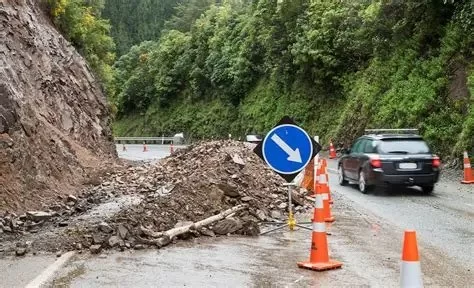How to Prepare for a Landslide While Car Camping: Safety and Survival Guide
- 1 - Understanding Landslide Risks
- 2 - Choosing a Safe Campsite Location
- 3 - Preparing Essential Gear and Supplies
- 4 - Monitoring Weather and Terrain Conditions
- 5 - Evacuation Strategies During an Emergency
1. Understanding Landslide Risks
When considering how to prepare for a landslide while car camping, it’s important to first understand what causes them. Landslides are often triggered by prolonged rainfall, rapid snowmelt, or seismic activity. Areas with steep slopes, loose soil, and recent deforestation are particularly vulnerable.
Many campers underestimate the speed at which a landslide can occur—sometimes in just seconds—making preparation essential for safety.
2. Choosing a Safe Campsite Location
2.1 Avoiding Hazard Zones
Always avoid pitching camp at the base of steep hills, near cliffs, or below loose rock formations. Even a mild slope can become dangerous if the soil is saturated with water.
2.2 Looking for Stable Ground
Select higher, flatter ground with well-rooted vegetation. Forested areas often have more stable soil due to the deep roots of mature trees. At Pine Cliff Resort, we recommend scouting potential campsites in daylight to fully assess surrounding terrain stability.
3. Preparing Essential Gear and Supplies
Essential landslide-prep gear for car camping includes a portable weather radio, first-aid kit, high-visibility emergency blanket, and extra water and food. Keep your vehicle stocked with a shovel and traction mats, as debris can block exits or trap your car.
Storing gear in easy-to-access locations within your vehicle ensures a quick response if evacuation becomes necessary.
4. Monitoring Weather and Terrain Conditions
Before your trip, check local landslide hazard maps and weather forecasts. While camping, keep a constant watch for warning signs such as new cracks in the ground, leaning trees, or unusual sounds like rumbling or cracking.
In 2014, a well-documented landslide in Washington state showed how rapid slope failure can occur after heavy rain—reminding campers to take even minor warning signs seriously.
5. Evacuation Strategies During an Emergency
If you suspect a landslide is imminent, leave the area immediately by moving to higher and more stable ground. Avoid riverbanks and valleys, as debris flows often follow natural drainage paths.
When car camping, keep your vehicle facing an exit route and free from obstructions so you can leave quickly. Practice emergency drills with your camping group so that everyone knows their role in a fast-moving situation.







